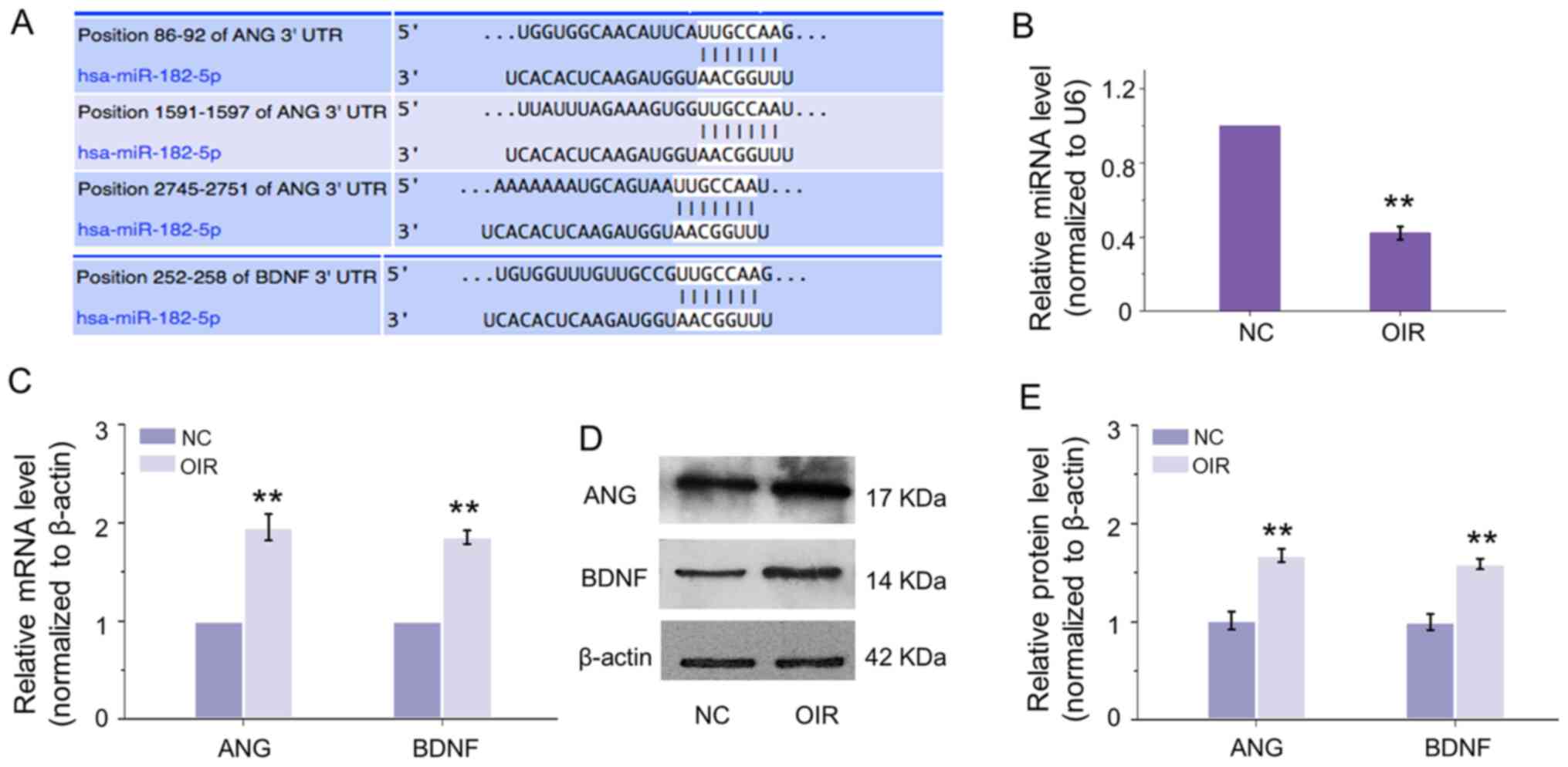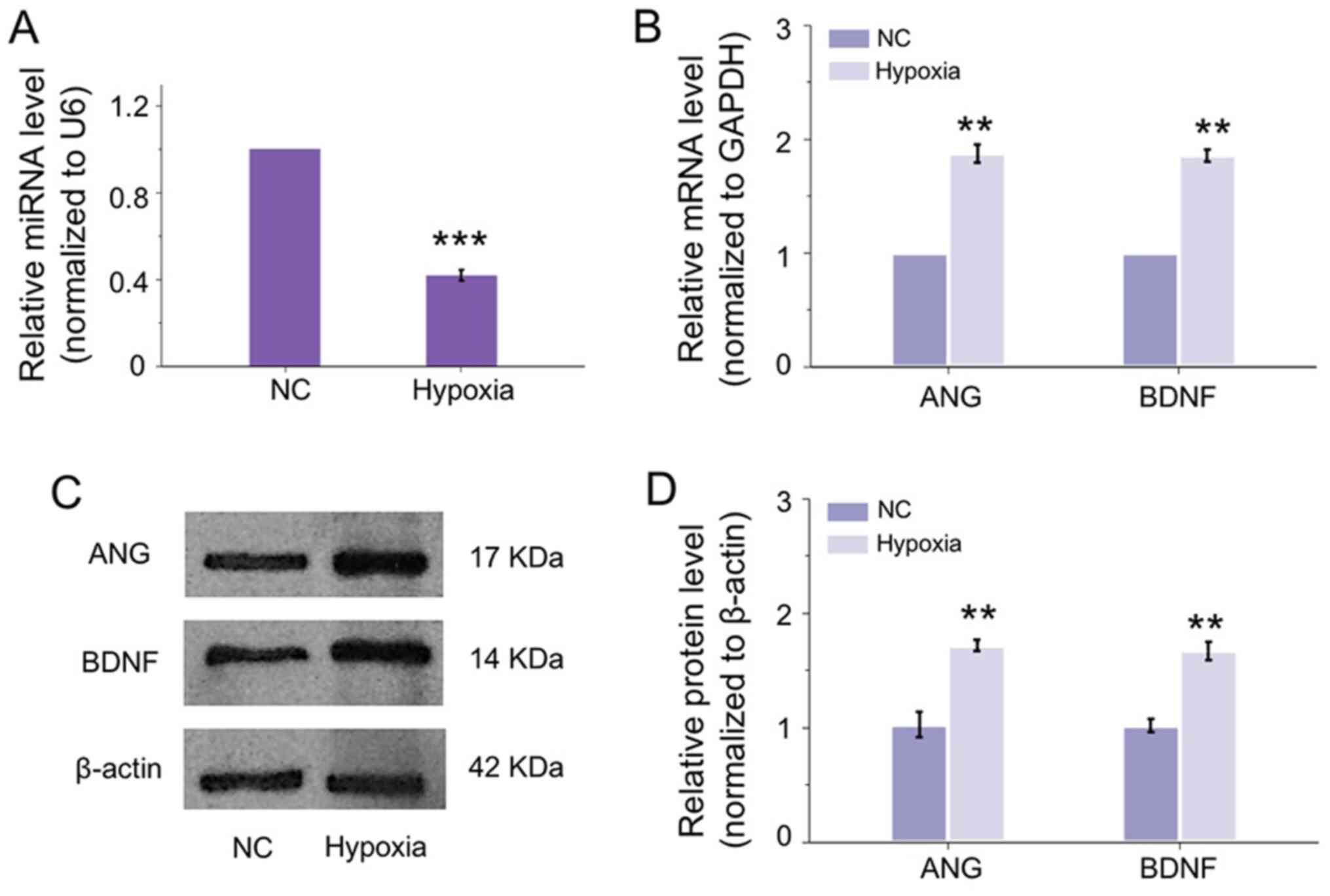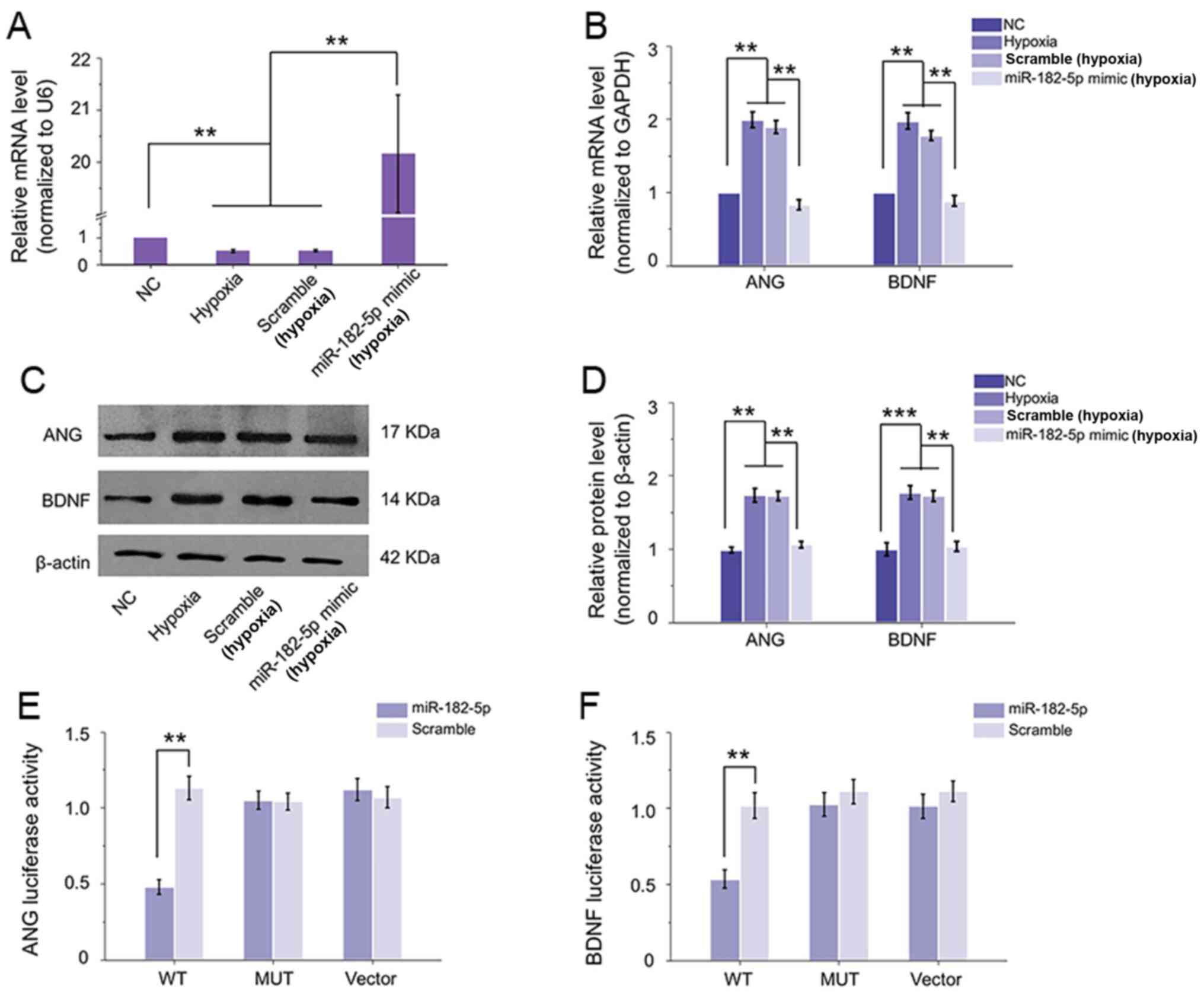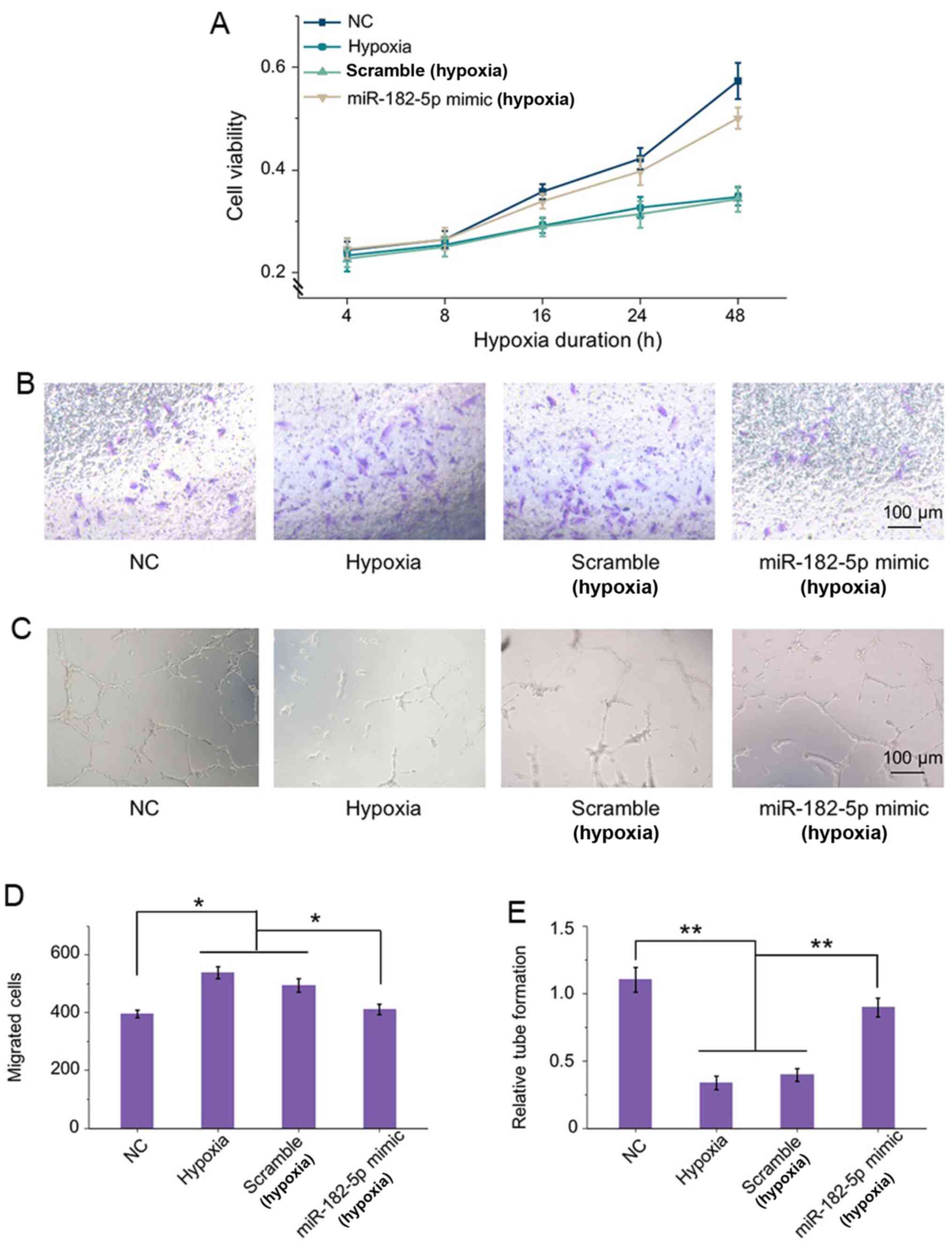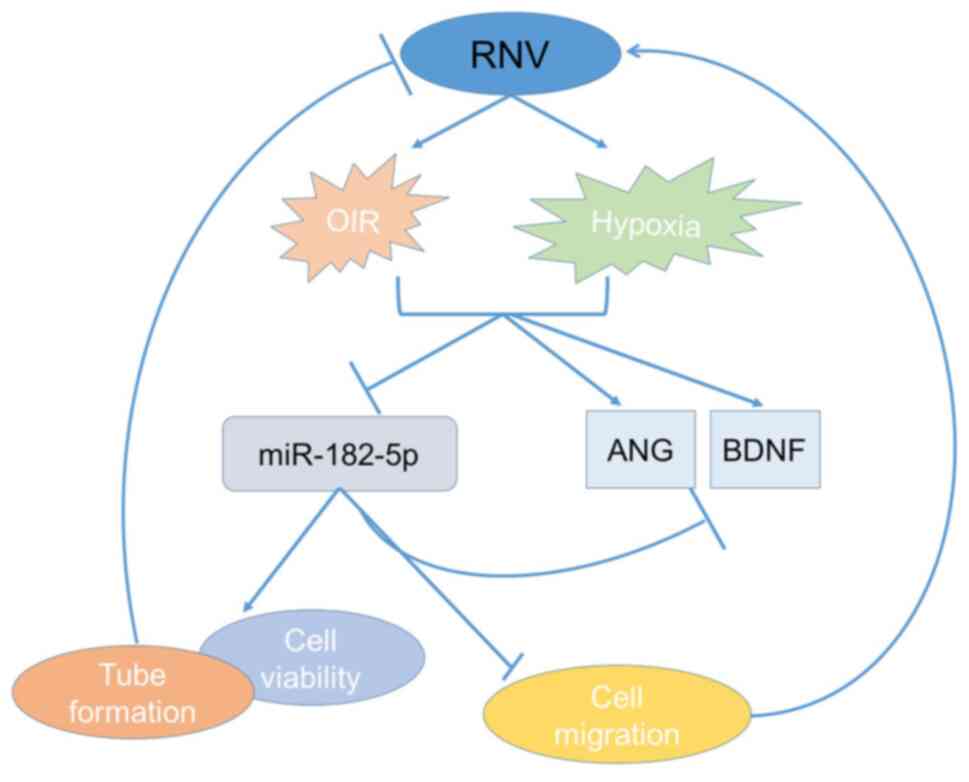|
1
|
Rajappa M, Saxena P and Kaur J: Ocular
angiogenesis: Mechanisms and recent advances in therapy. Adv Clin
Chem. 50:103–121. 2010. View Article : Google Scholar : PubMed/NCBI
|
|
2
|
Usui-Ouchi A, Aguilar E, Murinello S,
Prins M, Gantner ML, Wright PE, Berlow RB and Friedlander M: An
allosteric peptide inhibitor of HIF-1α regulates hypoxia-induced
retinal neovascularization. Proc Natl Acad Sci (USA).
117:28297–28306. 2020. View Article : Google Scholar : PubMed/NCBI
|
|
3
|
Berkowitz BA: Hypoxia and retinal
neovascularization. Retinal and Choroidal Angiogenesis Scientific
Symposium; Nashville, TN: pp. 151–168. 2005
|
|
4
|
Siemerink MJ, Augustin AJ and Schlingemann
RO: Mechanisms of ocular angiogenesis and its molecular mediators.
Dev Ophthalmol. 46:4–20. 2010. View Article : Google Scholar : PubMed/NCBI
|
|
5
|
Antonetti DA, Klein R and Gardner TW:
Diabetic retinopathy. N Engl J Med. 366:1227–1239. 2012. View Article : Google Scholar : PubMed/NCBI
|
|
6
|
Pavlov N and Badet J: Angiogenin:
Involvement in angiogenesis and tumour growth. Bull Cancer.
88:725–732. 2001.(In French). PubMed/NCBI
|
|
7
|
Kishimoto K, Liu S, Tsuji T, Olson KA and
Hu GF: Endogenous angiogenin in endothelial cells is a general
requirement for cell proliferation and angiogenesis. Oncogene.
24:445–456. 2005. View Article : Google Scholar : PubMed/NCBI
|
|
8
|
Allen SJ and Dawbarn D: Clinical relevance
of the neurotrophins and their receptors. Clin sci (Lon).
110:175–191. 2006. View Article : Google Scholar : PubMed/NCBI
|
|
9
|
Kermani P, Rafii D, Jin DK, Whitlock P,
Schaffer W, Chiang A, Vincent L, Friedrich M, Shido K, Hackett NR,
et al: Neurotrophins promote revascularization by local recruitment
of TrkB+ endothelial cells and systemic mobilization of
hematopoietic progenitors. J Clin Invest. 115:653–663. 2005.
View Article : Google Scholar : PubMed/NCBI
|
|
10
|
Matsuda S, Fujita T, Kajiya M, Takeda K,
Shiba H, Kawaguchi H and Kurihara H: Brain-derived neurotrophic
factor induces migration of endothelial cells through a
TrkB-ERK-integrin αVβ3-FAK cascade. J Cell Physiol. 227:2123–2129.
2012. View Article : Google Scholar : PubMed/NCBI
|
|
11
|
Salis MB, Graiani G, Desortes E, Caldwell
RB, Madeddu P and Emanueli C: Nerve growth factor supplementation
reverses the impairment, induced by Type 1 diabetes, of hindlimb
post-ischaemic recovery in mice. Diabetologia. 47:1055–1063. 2004.
View Article : Google Scholar : PubMed/NCBI
|
|
12
|
Bartel DP: MicroRNAs: Target recognition
and regulatory functions. Cell. 136:215–233. 2009. View Article : Google Scholar : PubMed/NCBI
|
|
13
|
Leung A and Natarajan R: Noncoding RNAs in
vascular disease. Curr Opin Cardiol. 29:199–206. 2014. View Article : Google Scholar : PubMed/NCBI
|
|
14
|
Gong Q and Su G: Roles of miRNAs and long
noncoding RNAs in the progression of diabetic retinopathy. Biosci
rep. 37:BSR201711572017. View Article : Google Scholar : PubMed/NCBI
|
|
15
|
Gong Q, Xie J, Liu Y, Li Y and Su G:
Differentially Expressed MicroRNAs in the Development of Early
Diabetic Retinopathy. J Diabetes Res. 2017:p1–10. 2017. View Article : Google Scholar
|
|
16
|
Giza DE, Vasilescu C and Calin GA:
MicroRNAs and ceRNAs: Therapeutic implications of RNA networks.
Expert Opin Biol Ther. 14:1285–1293. 2014. View Article : Google Scholar : PubMed/NCBI
|
|
17
|
Nitzan M, Steiman-Shimony A, Altuvia Y,
Biham O and Margalit H: Interactions between distant ceRNAs in
regulatory networks. Biophys J. 106:2254–2266. 2014. View Article : Google Scholar : PubMed/NCBI
|
|
18
|
Kim CB, D'Amore PA and Connor KM:
Revisiting the mouse model of oxygen-induced retinopathy. Eye
Brain. 8:67–79. 2016. View Article : Google Scholar : PubMed/NCBI
|
|
19
|
Livak KJ and Schmittgen TD: Analysis of
relative gene expression data using real-time quantitative PCR and
the 2(T (−Delta Delta C)) method. Methods. 25:402–408. 2001.
View Article : Google Scholar : PubMed/NCBI
|
|
20
|
Selvam S, Kumar T and Fruttiger M: Retinal
vasculature development in health and disease. Prog Retin Eye Res.
63:1–19. 2018. View Article : Google Scholar : PubMed/NCBI
|
|
21
|
Campochiaro PA: Molecular pathogenesis of
retinal and choroidal vascular diseases. Prog Retin Eye Res.
49:67–81. 2015. View Article : Google Scholar : PubMed/NCBI
|
|
22
|
Lutty GA and McLeod DS: Development of the
hyaloid, choroidal and retinal vasculatures in the fetal human eye.
Prog Retin Eye Res. 62:58–76. 2018. View Article : Google Scholar : PubMed/NCBI
|
|
23
|
Rattner A, Williams J and Nathans J: Roles
of HIFs and VEGF in angiogenesis in the retina and brain. J Clin
Invest. 129:3807–3820. 2019. View Article : Google Scholar : PubMed/NCBI
|
|
24
|
Wallsh JO and Gallemore RP:
Anti-VEGF-Resistant Retinal Diseases: A Review of the Latest
Treatment Options. Cells. 10:10492021. View Article : Google Scholar : PubMed/NCBI
|
|
25
|
Seah I, Zhao X, Lin Q, Liu Z, Su SZZ, Yuen
YS, Hunziker W, Lingam G, Loh XJ and Su X: Use of biomaterials for
sustained delivery of anti-VEGF to treat retinal diseases. Eye
(Lond). 34:1341–1356. 2020. View Article : Google Scholar : PubMed/NCBI
|
|
26
|
Michl M, Fabianska M, Seeböck P,
Sadeghipour A, Haj Najeeb B, Bogunovic H, Schmidt-Erfurth UM and
Gerendas BS: Automated quantification of macular fluid in retinal
diseases and their response to anti-VEGF therapy. Br J Ophthalmol.
0:1–8. 2020.
|
|
27
|
Viallard C and Larrivée B: Tumor
angiogenesis and vascular normalization: Alternative therapeutic
targets. Angiogenesis. 20:409–426. 2017. View Article : Google Scholar : PubMed/NCBI
|
|
28
|
Gao X and Xu Z: Mechanisms of action of
angiogenin. Acta Biochim Biophys Sin (Shanghai). 40:619–624. 2008.
View Article : Google Scholar : PubMed/NCBI
|
|
29
|
Yao X, Li D, Xiong DM, Li L, Jiang R and
Chen JX: A novel role of ribonuclease inhibitor in regulation of
epithelial-to-mesenchymal transition and ILK signaling pathway in
bladder cancer cells. Cell Tissue Res. 353:409–423. 2013.
View Article : Google Scholar : PubMed/NCBI
|
|
30
|
Numakawa T, Richards M, Adachi N, Kishi S,
Kunugi H and Hashido K: MicroRNA function and neurotrophin BDNF.
Neurochem Int. 59:551–558. 2011. View Article : Google Scholar : PubMed/NCBI
|
|
31
|
Pearse RN, Swendeman SL, Li Y, Rafii D and
Hempstead BL: A neurotrophin axis in myeloma: TrkB and BDNF promote
tumor-cell survival. Blood. 105:4429–4436. 2005. View Article : Google Scholar : PubMed/NCBI
|
|
32
|
Garrido MP, Torres I, Vega M and Romero C:
Angiogenesis in Gynecological Cancers: Role of Neurotrophins. Front
Oncol. 9:9132019. View Article : Google Scholar : PubMed/NCBI
|
|
33
|
Gong Q, Li F, Xie J and Su G: Upregulated
VEGF and Robo4 correlate with the reduction of miR-15a in the
development of diabetic retinopathy. Endocrine. 65:35–45. 2019.
View Article : Google Scholar : PubMed/NCBI
|
|
34
|
Gong Q, Xie J, Li Y, Liu Y and Su G:
Enhanced ROBO4 is mediated by up-regulation of HIF-1α/SP1 or
reduction in miR-125b-5p/miR-146a-5p in diabetic retinopathy. J
Cell Mol Med. 23:4723–4737. 2019. View Article : Google Scholar : PubMed/NCBI
|
|
35
|
Liu CH, Huang S, Britton WR and Chen J:
MicroRNAs in Vascular Eye Diseases. Int J of Mol Sci. 21:649
View Article : Google Scholar
|
|
36
|
Yan S, Wang H, Chen X, Liang C, Shang W,
Wang L, Li J and Xu D: MiR-182-5p inhibits colon cancer
tumorigenesis, angiogenesis, and lymphangiogenesis by directly
downregulating VEGF-C. Cancer Lett. 488:18–26. 2020. View Article : Google Scholar : PubMed/NCBI
|















